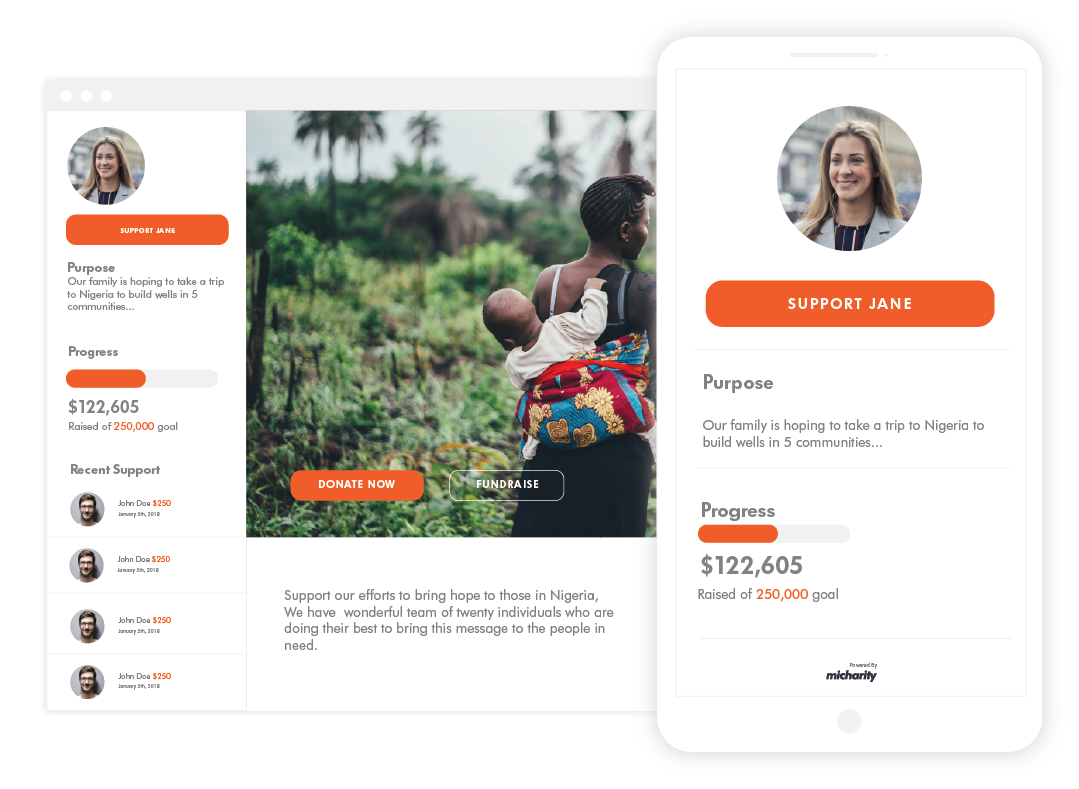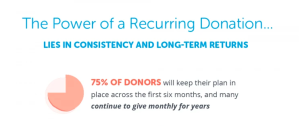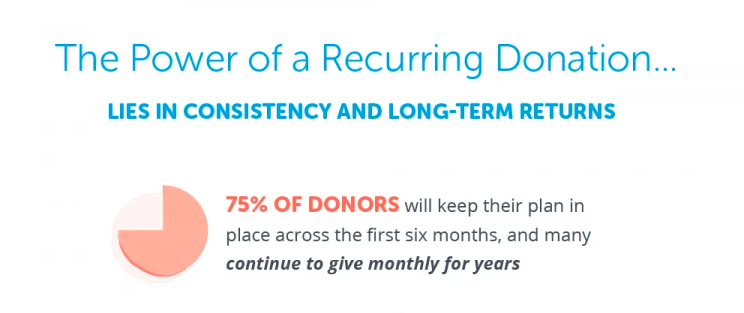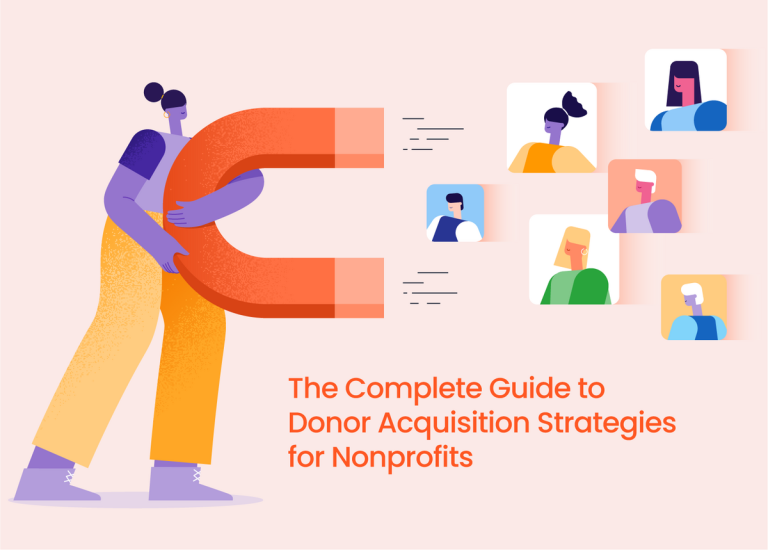You must dive into the world of donor engagement, where personal touches meet digital communication.
It’s critical to always be asking, “How can we tap into various marketing channels to reach potential donors?”
And today, we’re going to give you answers to get started.
We’re going to cover:
Creating a donor acquisition plan
Donor retention is down 20% in 2023, and nearly 90% of donors are contributing less than $500 annually. These simple data points clearly show how important new donor acquisition is to keep your nonprofit or charity running. If you can’t increase the average donation, you need to increase the number of acquired donors annually.

So, what is donor acquisition?
Donor acquisition is a critical strategy for nonprofit organizations. It’s all about bringing new donors or potential donors to your cause through effective marketing and networking.
How can you tell if your donor acquisition efforts are paying off? That’s where the acquisition rate comes in.
The donor acquisition rate, an essential metric, quantifies the number of first-time contributors during a specific period. The higher this rate, the more successful your donor acquisition strategies are considered.
Identify your ideal donor
Define the demographic and psychographic characteristics of your ideal donors. This should include things like:
- Demographic factors: Age, location/ geography, income level, occupation
- Psychographic factors: Values and beliefs, interests, hobbies, lifestyle choices, attitude toward philanthropy and social responsibility
- Behavioral factors: Giving history, donation frequency, involvement in past campaigns or fundraising events, engagement with previous communications
- Technographic factors: Preferred communication channels (email, social media, direct mail, etc.)
- Motivations and interests: Causes and issues that resonate with them, personal or emotional connections to the organization’s mission
- Capacity to give: Financial capacity, willingness to contribute time or expertise
- Network and influence: Social and professional networks, potential to act as an advocate or ambassador for the organization
- Alumni or affiliation: Alumni of the organization or program, affiliation with partner organizations or movements
- Accessibility and inclusivity: Consideration for diverse backgrounds and abilities
Utilize multichannel communications
Once you have your average donor demographic, it’s time to target them through multichannel marketing. Think about where they hang out online and in your community, and leverage those methods. This may include:
Social media
Social media provides a means to link with prospective benefactors intimately. Regular posting about the organization’s activities or sharing impactful stories encourages interaction and fosters a sense of community among followers.
Email campaigns
Email remains an effective way of reaching out directly to prospective donors while maintaining control over messaging content and timing.

A well-crafted email campaign tells the story of your organization and its mission effectively, driving interest in supporting your cause. Plus, you can use this to send impact reports to combat any fear of fund misuse.
Digital ads
Digital advertising offers targeted outreach based on demographic data – age groups, geographical locations, and interests aligning with yours.
It enables nonprofits like yours to find potential supporters who may otherwise be unaware of your mission yet are likely willing contributors if given the chance.
Mailing lists
Last but not least, an oldie but a goodie, direct mail still has its place in donor acquisition strategies. This is especially true for older donors who might prefer traditional communication methods over digital ones.
Search engine optimization (SEO)
Identify potential high-ranking keywords that are relevant to your charity. Just think about what your ideal donor is putting into a Google search bar and leverage that.
For example:
- Volunteer opportunities in {your city}
- Fundraising events in {your city}
- Organizations supporting {your cause}
The best part about SEO? It doesn’t cost anything in ad spend. It still costs money to deploy, but over the long haul, it can become cheaper than ads.
Host events to cultivate in-person relationships
Events play a crucial role in your donor acquisition strategies because they build your brand. From benefit concerts to half marathons, these gatherings create excitement and interest. They also give you opportunities to add contacts to mailing lists.

Consider offering interactive experiences or sharing heartfelt stories during the event – anything that makes an emotional connection between attendees and your cause.
Once you’ve made contact through the event, don’t let those connections go cold.
Use digital communication methods like email campaigns or social media outreach – ensuring all content stays engaging – to keep up the momentum after an event ends. This strategy aids not only in retaining existing donors but also in acquiring new ones effectively by keeping their interest piqued post-event.
Lean on donor relationships for networking
Remember when you were coming up with your donor profile? Part of that was analyzing if they’d be a good ambassador for your cause. This is where that comes in!
Ensure your team is out in the community
Now, you should rely on donors, but your team also needs to be out in the community cultivating potential donor relationships. Join the local Chamber of Commerce or allow your staff to volunteer for other causes that are adjacent to your own during work hours.

The more your team shows up, the greater opportunity they have to make meaningful connections that will serve your nonprofit.
Build corporate partnerships
Every fundraising consultant will tell you that partnering with corporate entities is non-negotiable. Finding companies with values that align with yours is crucial. It makes sure your partnership feels authentic to both parties involved and, more importantly, to potential donors.
The strength of this synergy doesn’t stop there, either. Companies might also offer matching gift programs that could effectively double the donations received from their employees – meaning higher donation forms completed and potentially bigger gift sizes. Plus, you can strategically leverage their resources:
For example:
- A software company could give free licenses for fundraising campaigns.
- An airline may donate travel vouchers as prizes.
- A media conglomerate might lend its platform for advertising appeals during peak giving times.
Such gestures not only increase your donor base but also enhance the personal touch in your relationship with potential donors. This approach is one of the most cost-effective donor acquisition strategies as it leverages existing resources and platforms for greater reach and impact.
Work on retaining current donors
Acquiring donors doesn’t have to start with new audiences.
Good donor retention strategies are just as important as acquisition. Keeping your recurring donor base engaged and committed is key to a successful donor acquisition strategy that leads to a long donor lifetime. Plus, the more recurring donors you have, the less you have to do to acquire donors to increase your bottom line.
There are a few ways you can increase the value of current donor relationships:
Create opportunities for recurring donations
A recurring donation plan allows existing donors to contribute regularly, ensuring a steady stream of recurring donor support for your organization.


This could show up in a few different ways:
- Multiple-year commitment during an annual appeal
- Monthly giving to support a specific cause or the organization as a whole
For these donors, you want to give exclusive perks like opportunities for one-on-one interactions with leadership or key staff, limited-edition merchandise or donor-exclusive items, exclusive updates and behind-the-scenes content, etc.
Reengage lapsed donors
No matter how effective your acquisition strategies are, some donor attrition is inevitable. Re-engagement is the key to bringing lapsed donors back and turning them into recurring donors.
An individualized approach, with tailored digital communication based on their interests and previous giving patterns, helps bring lapsed donors back into the fold. Then, focus on donor stewardship more than ever so you don’t lose them again.
Evaluating Donor Acquisition Efforts
The key to getting started is putting a nonprofit CRM in place that can help you identify your current donor acquisition rates and give you benchmarks for future success. Tracking acquisition metrics like retention rates and acquisition rates is a vital part of any donor acquisition strategy.
The data gathered from analyzing both your successes and shortcomings should be used to refine your processes. Remember, the most successful donor acquisitions are often the result of continuous improvement based on feedback.
If you want a tool that can help you analyze the efficacy of your donor acquisition strategies, book a demo of Stratly today.

